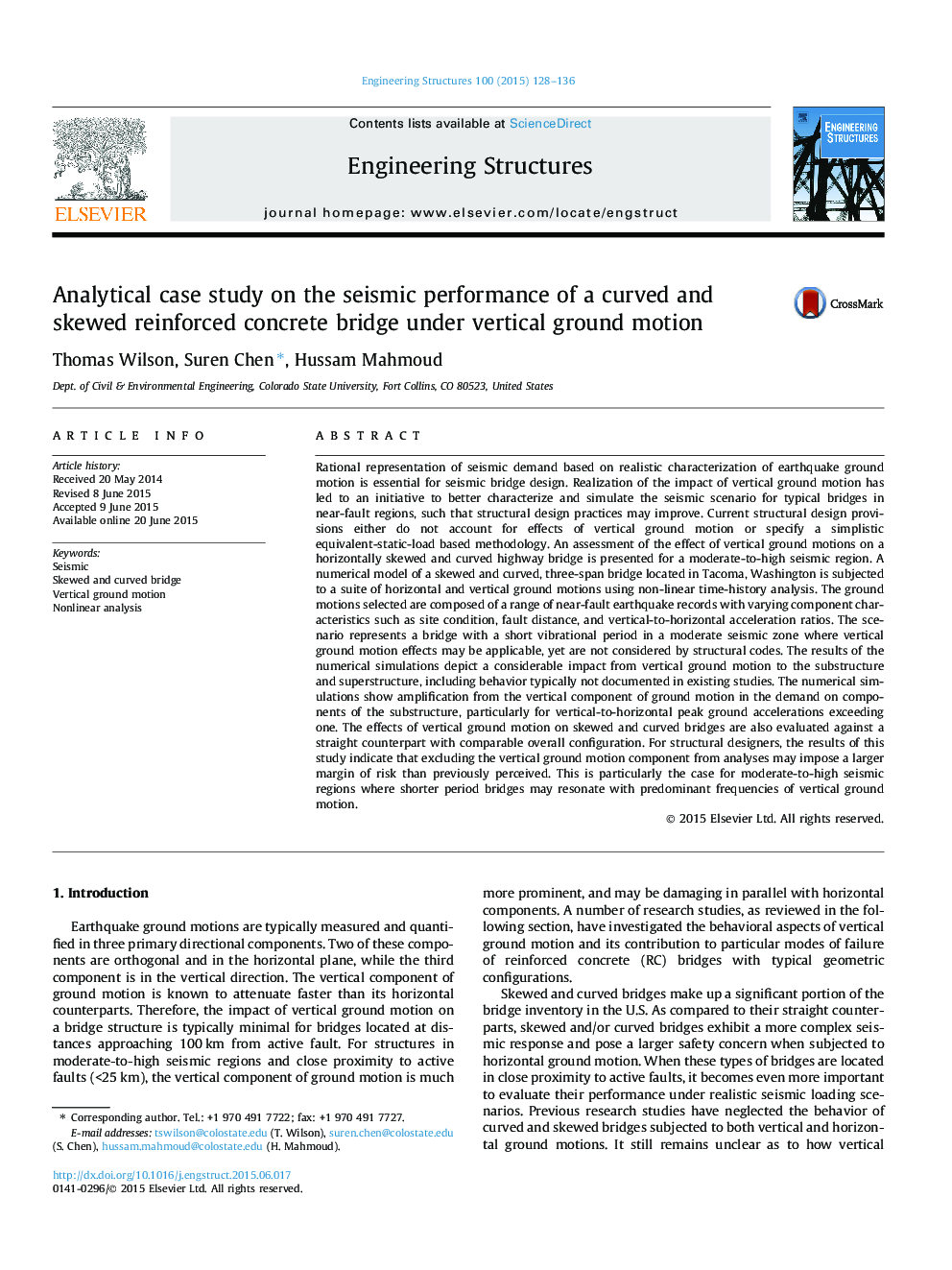| Article ID | Journal | Published Year | Pages | File Type |
|---|---|---|---|---|
| 266105 | Engineering Structures | 2015 | 9 Pages |
•A typical curved and skewed bridge is studied considering vertical ground motion.•Excluding vertical ground motion may impose larger risk than perceived.•Shorter period bridges may resonate with vertical ground motion in moderate-to-high seismic regions.
Rational representation of seismic demand based on realistic characterization of earthquake ground motion is essential for seismic bridge design. Realization of the impact of vertical ground motion has led to an initiative to better characterize and simulate the seismic scenario for typical bridges in near-fault regions, such that structural design practices may improve. Current structural design provisions either do not account for effects of vertical ground motion or specify a simplistic equivalent-static-load based methodology. An assessment of the effect of vertical ground motions on a horizontally skewed and curved highway bridge is presented for a moderate-to-high seismic region. A numerical model of a skewed and curved, three-span bridge located in Tacoma, Washington is subjected to a suite of horizontal and vertical ground motions using non-linear time-history analysis. The ground motions selected are composed of a range of near-fault earthquake records with varying component characteristics such as site condition, fault distance, and vertical-to-horizontal acceleration ratios. The scenario represents a bridge with a short vibrational period in a moderate seismic zone where vertical ground motion effects may be applicable, yet are not considered by structural codes. The results of the numerical simulations depict a considerable impact from vertical ground motion to the substructure and superstructure, including behavior typically not documented in existing studies. The numerical simulations show amplification from the vertical component of ground motion in the demand on components of the substructure, particularly for vertical-to-horizontal peak ground accelerations exceeding one. The effects of vertical ground motion on skewed and curved bridges are also evaluated against a straight counterpart with comparable overall configuration. For structural designers, the results of this study indicate that excluding the vertical ground motion component from analyses may impose a larger margin of risk than previously perceived. This is particularly the case for moderate-to-high seismic regions where shorter period bridges may resonate with predominant frequencies of vertical ground motion.
